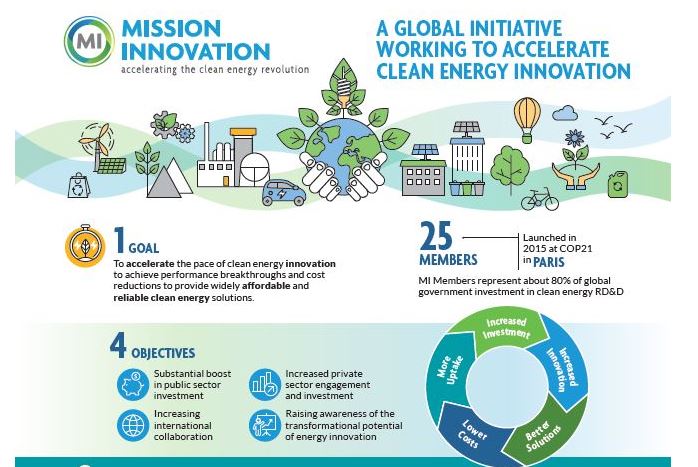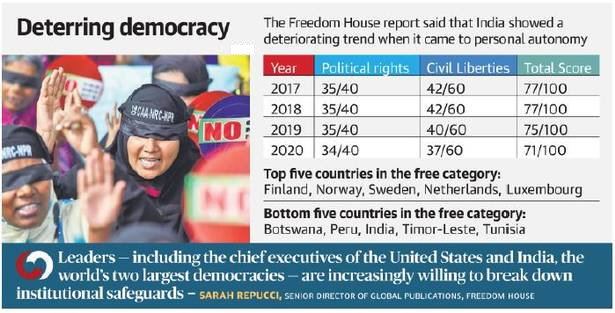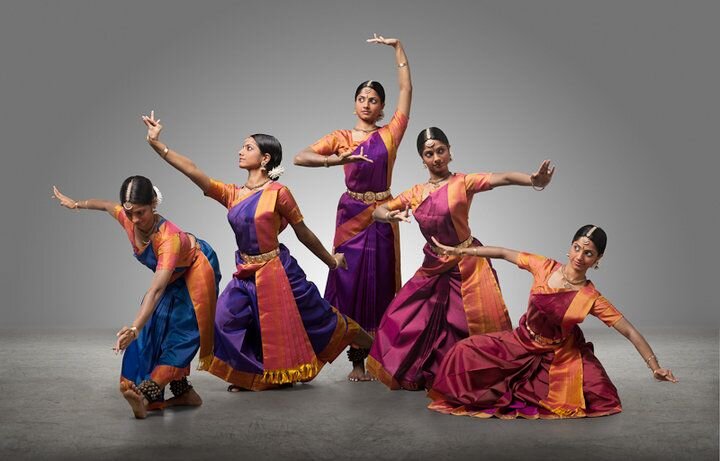Science & Technology
Fuel Cell Technology for Disaster Management
Why in News
The International Advanced Research for Powder Metallurgy & New Materials (ARCI), Hyderabad has developed Polymer Electrolyte Membrane Fuel Cells (PEMFC).
- ARCI is an autonomous Research and Development (R&D) Centre of the Department of Science and Technology (DST).
Polymer Electrolyte Membrane Fuel Cells
- PEMFC convert the chemical energy stored in hydrogen fuel directly and efficiently to electrical energy with water as the only byproduct without the need for grid power as required by conventional battery backup systems.
- Potential: To reduce energy use, pollutant emissions and dependence on fossil fuels and providing sustainable electricity.
- Advantage: Operational capability at low-temperatures with applications in decentralised power generation systems.
Key Points
- The ARCI has developed in-house PEMFC systems in the power range of 1 to 20 kiloWatt (kW) at its Centre for Fuel Cell Technology, Chennai.
- ARCI is planning to set up a PEMFC system at Tamil Nadu State Emergency Operation Centre (TN SEOC) as a disaster management measure.
- Tamil Nadu is generally affected by five to six cyclones every year, of which two to three are severe.
- In general, Emergency Operation Centres (EOC) backed with a 10 kW system along with fuel cell stack, air moving subsystems, power control devices and control and monitoring system is being planned as a natural disaster management measure.
- EOCs have been set up in the states as per the National disaster Management Guidelines.
- An EOC is the hub to coordinate various activities during emergencies. The basic functions of the EOC includes collection and dissemination of early warnings on disaster, ensuring administrative and community preparedness and coordinating with all emergency support functions.
- Fuel cell systems in EOCs offer a potential benefit in terms of providing sustainable electricity.
- India is vulnerable to a large number of disasters.
- Disaster risks in India are further compounded by increasing vulnerabilities related to changing demographics and socio-economic conditions, unplanned urbanization, development within high-risk zones, environmental degradation, climate change, geological hazards, epidemics and pandemics.
- There has been a paradigm shift in the focus of Disaster Management, from response-centric (rescue, relief, rehabilitation, and reconstruction) to laying greater emphasis on the other elements of disaster management cycle (prevention, mitigation, and preparedness) as a means to avert the impact of future emergencies.
Science & Technology
New Test with Quantum Coins & Computers for Quantum Sensing
Why in News
- Researchers from the Raman Research Institute (RRI) (autonomous institution under the Department of Science & Technology) have devised a new test for fairness of quantum coin or qubit using entanglement theory.
Key Points
- The test uses entanglement to test the fairness of the quantum coin. Their strategy enables better discrimination between quantum states. Such an advantage is valuable in quantum sensors
- This is a significant contribution to quantum state discrimination and an essential aspect of quantum information science which is expected to influence quantum sensing.
Quantum Information and Quantum Computing Technology
- The domain of Quantum Information and Quantum Computing Technology is a growing area of research which is expected to influence Data Processing, which in turn, plays a central role in our lives in this Information Age.
- For instance, bank transactions, online shopping and so on crucially depend on the efficiency of information transfer.
- Thus the work on quantum state discrimination is expected to be valuable in people’s lives in the current era.
Qubit
- A quantum bit, or qubit, is the basic unit of information for a quantum computer, analogous to a bit in ordinary machines.
- But unlike a bit, which can have the value 0 or 1, a qubit can take on an infinite number of values.
Quantum computer
- A quantum computer is any device for computation that makes direct use of distinctively quantum mechanical phenomena, such as superposition and entanglement, to perform operations on data.
- Superposition means that each qubit can represent both a ‘1’ and a ‘0’ at the same time
- Quantum entanglement occurs when two particles become inextricably linked, and whatever happens to one immediately affects the other, regardless of how far apart they are.
- Entanglement is a special type of correlation that exists in the quantum world with no classical counterpart.
International Relations
Gender Parity Index: UNESCO
- Gender Parity Index in primary, secondary and tertiary education is the ratio of the number of female students enrolled at primary, secondary and tertiary levels of education to the number of male students in each level.
- In short, GPI at various levels reflect equitable participation of girls in the School system.
- GPI is released by the United Nations Educational, Scientific and Cultural Organization (UNESCO) as a part of its Global Education Monitoring Report.
- A GPI of 1 indicates parity between the sexes; a GPI that varies between 0 and 1 typically means a disparity in favour of males; whereas a GPI greater than 1 indicates a disparity in favour of females.
- India’s GPI for the year 2018-19 at different levels of School Education is as under:
- Primary Education: 1.03
- Upper Primary Education: 1.12
- Secondary Education: 1.04
- Higher Secondary Education: 1.04
- India’s GPI indicates that the number of girls is more than the number of boys at all levels of school Education.
- In 2018-19, the Ministry of Human Resource Development launched the ‘Samagra Shiksha’ scheme. It is a Centrally Sponsored Scheme.
- It is an overarching programme for the school education sector extending from pre-school to class XII and aims to ensure inclusive and equitable quality education at all levels of school education.
- One of its objectives is to bridge social and gender gaps in school education.
- To provide quality education to girls from disadvantaged groups, Kasturba Gandhi BalikaVidyalayas (KGBVs) have been sanctioned in Educationally Backward Blocks (EBBs) under SamagraShiksha.
- KGBVs are residential schools from class VI to XII for girls belonging to disadvantaged groups such as SC, ST, OBC, Minority and Below Poverty Line (BPL).
Note: Educationally Backward Blocks are drawn on the basis of twin criteria of Female Literacy Rate and Gender Gap in Literacy. However, some blocks have been identified only on the basis of Female Literacy Rate also.
Biodiversity & Environment
Initiatives Launched during India Smart Utility Week 2020
Why in News
Recently, the India-European Union Flagship Call on Integrated Local Energy Systems was announced at India Smart Utility Week 2020.
- Additionally, Sweden and India have also announced the India-Sweden Collaborative Industrial Research & Development Programme during the event.
India Smart Utility Week 2020
- India Smart Grid Forum (ISFG) has been organising its flagship annual event, India Smart Grid Week (ISGW) since 2015. It has been renamed as India Smart Utility Week (ISUW) in 2019.
- It is considered as one of the top five international events on Smart Grids and Smart Cities.
- ISUW 2020 will be organised as an International Conference and Exhibition on Smart Energy and Water for Smarter Cities.
- It will bring together the world’s leading smart energy experts and researchers to discuss trends, share best practices and showcase next-generation technologies and products in smart energy and smart cities domains.
India-European Union Flagship Call on Integrated Local Energy Systems
- The partnership between Indian and European Union will help to strengthen cooperation in energy research and innovation, mainly in renewable energy and its integration in the energy system.
- It will also help to find solutions encompassing local integration across various energy vectors and increase the share of renewables in the energy mix and high energy efficiency.
- The programme is in line with both the European Union’s and India’s involvement in Mission Innovation (MI).
Mission Innovation
- Mission Innovation (MI) is a global initiative of 24 countries and the European Commission (on behalf of the European Union) working to reinvigorate and accelerate global clean energy innovation with the objective to make clean energy widely affordable.
- MI was announced at COP21 on November 30, 2015, as world leaders came together in Paris to commit to ambitious efforts to combat climate change.
India-Sweden Collaborative Industrial Research & Development Programme
- India-Sweden Collaborative Industrial Research & Development Programme is a collaborative programme on Smart Grids at a collective investment of 5 Million US $ which will help to transform the clean energy sector into a secure, adaptive, sustainable and digitally-enabled ecosystem and provide reliable and quality energy for all.
- It is a joint Programme, co-funded by the Indian Department of Science & Technology (DST) and the Swedish Energy Agency.
- It aims to bring together world-class expertise of Sweden and India to address challenges in the area of Smart Grids.
- A smart grid is an electrical grid which includes a variety of operation and energy measures including smart meters, smart appliances, renewable energy resources, and energy-efficient resources.
- The project also aims to develop technologies that can be commercialized after two years through cooperation between India and Sweden.
International Relations
Freedom in the World 2020 Report
Why in News
The Freedom in the World 2020 report has ranked India at the 83rd position along with Timor-Leste and Senegal.
- The report is released by Freedom House, a U.S.-based watchdog, which has been tracking global political and civil liberties for almost half a century.
- The report derives its methodology from the Universal Declaration of Human Rights, adopted by the United Nations General Assembly (UNGA) in 1948.
- It covers 195 countries, awarding scores based on-
- Political rights indicators such as the electoral process, political pluralism and participation and government functioning.
- Civil liberties indicators related to freedom of expression and belief, associational and organisational rights, the rule of law and personal autonomy and individual rights.
Key Highlights of the Report
- India’s score fell by four points to 71, the worst decline among the world’s 25 largest democracies.
- India scored 34 out of 40 points in the political rights category, but only 37 out of 60 in the civil liberties category, for a total score of 71, a drop from last year’s score of 75.
- India is near the bottom of the pile among the countries categorised as “Free”, with only Tunisia receiving a lower score.
- The scrapping of Article 370, the National Register of Citizens (NRC) and the Citizenship (Amendment) Act, 2019 (CAA), as well as the crackdown on mass protests have been listed as the main signs of declining freedom.
- The report criticised the internet blackout in Kashmir, terming it the longest shutdown ever imposed by a democracy.
- It highlighted that freedom of expression (Article 19) is under threat in India, with journalists, academics and others facing harassment and intimidation when addressing politically sensitive topics.
- The report noted that India has long been seen as a democratic counterweight to China and hence a strategic partner for the United States in the region.
- However, that view is changing, with India attracting criticism similar to that levied against China.
Important Facts For Prelims
Solar Charkha Mission
Why In News
Recently, the Minister for Micro, Small & Medium Enterprises gave information about the Solar Charkha Mission in Lok Sabha.
Key Points
- The Solar Charkha Mission is an enterprise driven scheme and envisages setting up of ‘Solar Charkha Clusters’ which will have 200 to 2042 beneficiaries (Spinners, Weavers, Stitchers and other skilled artisans).
- One cluster would involve a maximum subsidy of Rs. 9.60 crore provided in form of Capital subsidy for individual and Special Purpose Vehicle (SPV), interest subvention for working capital and capacity building.
- These solar charkhas are to be operated using solar power which is a renewable energy source. It will help in the development of Green Economy as it is an environment friendly programme. It will also generate sustainable employment for the artisans.
Background
- The Solar Charkha Mission is a Ministry of Micro Small & Medium Enterprises (MSME) initiative launched during June 2018.
- A pilot project on Solar Charkha was implemented at Khanwa village, Nawada District of Bihar in 2016. Based on the success of the pilot project, the Government of India had accorded approval to set up 50 such clusters with a budget of Rs. 550 Crore for 2018-19 and 2019-20.
- The scheme is envisaged to generate direct employment nearly to one lakh persons in the approved clusters.
Scheme Objectives
- To ensure inclusive growth by generation of employment, especially for women and youth, and sustainable development through solar charkha clusters in rural areas.
- To boost rural economy and help in arresting migration from rural to urban areas.
- To leverage low-cost, innovative technologies and processes for sustenance.
Important Facts For Prelims
Bharatnatyam
Origin
- Bharatanatyam is one of the oldest (considered to be over 2000 years old) and most popular forms of classical dance that originated in Tanjore district in Tamil Nadu, India.
- Bharatnatyam is one among the eight classical dances of India.
- The origin of this dance can be traced to the sage Bharata Muni's Natyashastra.
- The Abhinaya Darpana by Nandikesvara is one of the main sources of textual material, for the study of the technique and grammar of body movement in Bharatnatyam Dance.
- The style was kept alive by the devadasis, the young girls 'gifted' by their parents to the temples and married to the gods.
Features
- Bharatnatyam dance is known to be ekaharya, where one dancer takes on many roles in a single performance.
- The dance involves transitional movements of the leg, hip and arm. Expressive eye movements and hand gestures are used to convey emotions. It encompasses Bhav, Rag, Ras and Taal.
- This form of dance is slow and moving, but at times fast and fluid and hence is also called Fire Dance.
- The accompanying orchestra consists of a vocalist, a mridangam player, violinist or veena player, a flautist and a cymbal player. The person who conducts the dance recitation is the Nattuvanar.
Important Facts For Prelims
Scheme for Pension and Medical Aid to Artistes
- The Scheme for Pension and Medical Aid to Artistes is being implemented by the Ministry of Culture.
- Objective: To improve the financial and socio-economic status of the old artists and scholars (not less than 60 years of age) who have contributed significantly in their specialized fields of arts, letters etc. in their active age or are still contributing.
- Monthly pension: An amount of maximum Rs. 4000/- per month is being given to each beneficiary, out of which minimum Rs. 500/- financial assistance from State/UT Govt. is included.
- Medical aid:The Scheme provides for medical aid facilities to an artist and his/her spouse by covering them under a convenient and affordable Health Insurance Scheme of the Government.
Important Facts For Prelims
ICONSAT 2020
Why in News
The International Conference on NanoScience and NanoTechnology (ICONSAT) 2020 is being organized during 5th-7th March at Kolkata (West Bengal).
- ICONSAT is the series of biennial international conferences held in India under the aegis of Nano Mission, Department of Science and Technology (DST).
Key Points
- The conference intends to bring out cutting-edge developments in the domain of physical, chemical, materials as well as biological sciences with the help of nanotechnology.
- The event emphasised on 5Ms – Mechanical, Material, Machines, Manufacturing and Manpower, and integration of these 5 Ms with nano-science and technology.
- It also aimed to integrate nanotechnology with sustainable development and new technology (machine learning, artificial intelligence and so on).
- It emphasized the need to create a network of experts in nano-science and to collaborate the knowledge across sectors like energy, agriculture, transport, health and so on.
- It also aims to provide a potential platform for young researchers and students from within the country and abroad to keep pace with the latest development in the emerging areas of Nano Science and Technology.
Nano Mission
- The Government of India launched the Nano Mission in 2007 as an "umbrella capacity-building programme".
- It is being implemented by the Department of Science and Technology (DST) under the Ministry of Science and Technology.
- The objectives of the mission are:
- Basic research promotion
- Infrastructure development
- Nano applications and technology development
- Human Resource development
- International collaborations
- As a result of the efforts led by the Nano Mission, today, India is amongst the top five nations in the world in terms of scientific publications in nanoscience and technology (moving from 4th to the 3rd position).
- The Nano Mission has established national dialogues to promote R&D in the development of standards for nanotechnology and for laying down a National Regulatory Framework Road-Map for Nanotechnology (NRFR-Nanotech).
Important Facts For Prelims
Jeevan Kaushal Curriculum
Why in News
Recently, the Minister of Human Resource Development informed about the implementation of Jeevan Kaushal (life skills) curriculum in a written reply in the Lok Sabha.
Key Points about Curriculum
- The University Grants Commission (UGC) has developed life skills (Jeevan Kaushal) curriculum for undergraduate students at Universities and Colleges.
- It covers the courses on communication skills, professional skills, leadership & management skills and universal human values.
- The implementation of curriculum is suggestive.
- The objectives of the curriculum are:
- Enhancement of self awareness
- Creation of emotional competency and emotional intelligence
- Learning through practical experiences
- Development of interpersonal skills
- Time and Stress management
- Achievement of excellence with ethics.







